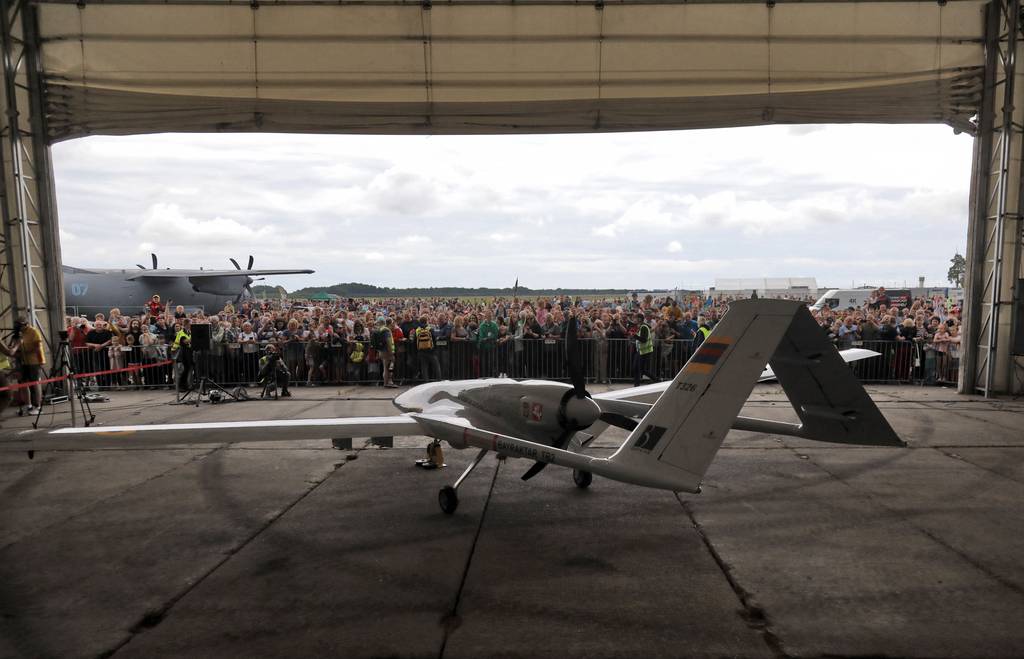BRNO, Czech Republic — The Turkish-made Bayraktar TB2 drones, which reportedly assisted Ukraine in military successes earlier in the war, are now of limited utility amid Russian forces bolstering their air defenses, according to a Ukrainian military official.
The assessment by Col. Volodymyr Valiukh, a commander in Ukraine’s Main Intelligence Directorate, comes as unmanned aerial vehicles of all sizes and flavors continue to play a key role in Ukraine’s defense calculus. But new tactical constraints have come into play, he said.
In the early weeks of the Russian invasion, the drone often singled out in news headlines was the TB2, produced by Turkish manufacturer Baykar. Among the hits logged by Ukrainian TB2s are five tanks, six towed artillery pieces, six naval ships, two logistics trains, two multiple rocket launchers, two anti-aircraft guns and over a dozen surface-to-air missiles, according to the Dutch open-source intelligence website Oryx.
However, over the course of the last year, several reports noted that the drones seemed to have disappeared from available footage of battlefield action and that their use had become more limited in the face of more sophisticated Russian air defenses.
“For the TB2, I don’t want to use the word useless, but it is hard to find situations where to use them,” Valiukh said at the GSOF Symposium here on Oct. 26.
In an interview with Defense News, the Ukrainian commander clarified there is evidently still some use for them, but that the deployment frequency and roles for those drone types had changed.
“We are extremely grateful for the TB2s, but at the beginning of the war they were deployed more and striked more,” Valiukh said. Now that Russian air and electronic defenses have grown in quality, he added, the last TB2 flight he observed lasted a mere 30 minutes.
Per the manufacturer, Baykar, the drones can stay airborne for 27 hours.
The company told Defense News that reports about the limited utility of its flagship product should be taken with a grain of salt.
“Not seeing any videos does not necessarily mean that the drones are not being used,” CEO Haluk Bayraktar told Defense News. “This is a challenging environment to operate in,” with hundreds of medium- to long-range Russian air defenses deployed within range, he added.
“Currently, the Bayraktar TB2s are mainly used to conduct daily flights to track the targets, which can be as valuable as attacking,” Bayraktar said.
In that reconnaissance role, the usage rate in Ukraine is still high, according to company logs seen by Defense News.
“TB2s don’t attack unless they figure out open windows, no need to be an easy target for Russian air defense systems,” Bayraktar said. “This is the same for any other flying platform such as fighter jets, helicopters et cetera unless it is an affordable, low-cost mini drone,” he added.
Since June, Ukrainian TB2s have received upgrades that include advanced camera gear, the Mx-20, provided directly to the embattled country by Canadian manufacturer L3Harris Wescam. The new imaging equipment enables higher-altitude and longer-range surveillance missions, per the vendor.
Elisabeth Gosselin-Malo is a Europe correspondent for Defense News. She covers a wide range of topics related to military procurement and international security, and specializes in reporting on the aviation sector. She is based in Milan, Italy.








